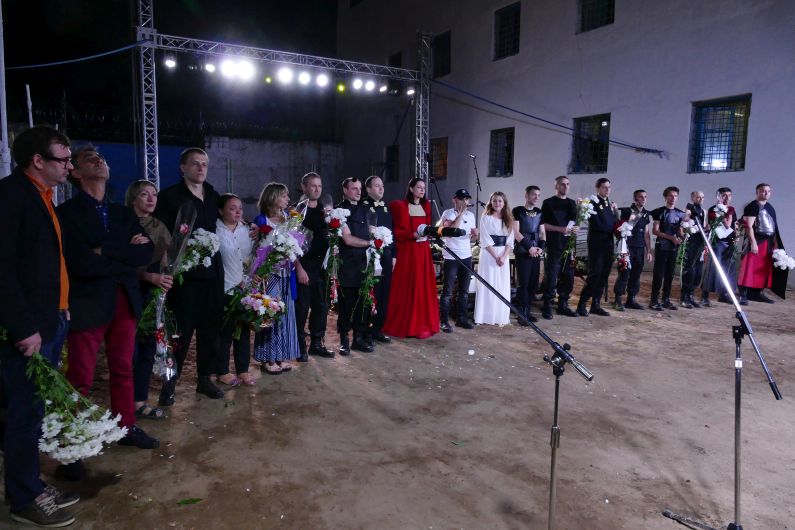By Lino Brosius
“Welcome to prison!” On September 15, 2016 in the yard of Penitentiary no. 17 Rezina, eleven life-sentence detainees performed in the play Hamlet Process alongside professional actors. Based on Shakespeare and directed by Luminita Țâcu, this play marks the end of the first drama therapy project aimed at the rehabilitation and re-socialisation of life detainees in Moldova.
Gallery: Hamlet Process
Preparations for the premiere lasted almost 5 months, during which time the detainees worked daily on the text, bodily expression and acting skills together with the director, professional actors and theatre instructors. Several other Moldovan penitentiaries were involved in the preparations for the theatre project at Rezina prison: most of the costumes were produced at a workshop of Prison no. 7 Rusca, and artisans from Prison no. 9 Pruncul manufactured the metal stage and décor elements. The National Theatre Mihai Eminescu – a partner of the project – provided four professional actors who also performed in the play and produced several stage costumes for the event.
Gallery: Hamlet Process
Over 120 spectators attended the premiere at Rezina and thousands of people followed the event online and on a screen on a public square in downtown Chisinau. Before the premiere, the detainees performed the play for their relatives and employees of the penitentiary system.

Detainees, actors and play director Ms. Luminita Tacu
This theatre project was implemented by the Arts Centre COLISEUM in partnership with the Moldovan Ministry of Justice and the Department of Penitentiary Institutions of Moldova. The EU Project Support to the enforcement, probation and rehabilitation systems in Moldova, the Swiss Development and Cooperation office in Moldova, and the Norwegian Mission NORLAM actively contributed to it.
This theatre project provided an excellent opportunity to contribute to improving the public perception of serving sentences in Moldova and to correcting the internal perception among employees of the penitentiary system about detainees. The joint involvement of both detainees and prison staff in an activity so unusual for a detention centre helps to correct the psychological relationships between them. This performance also gave the public at large an opportunity to look beyond the stigma of the ‘detainee’.

